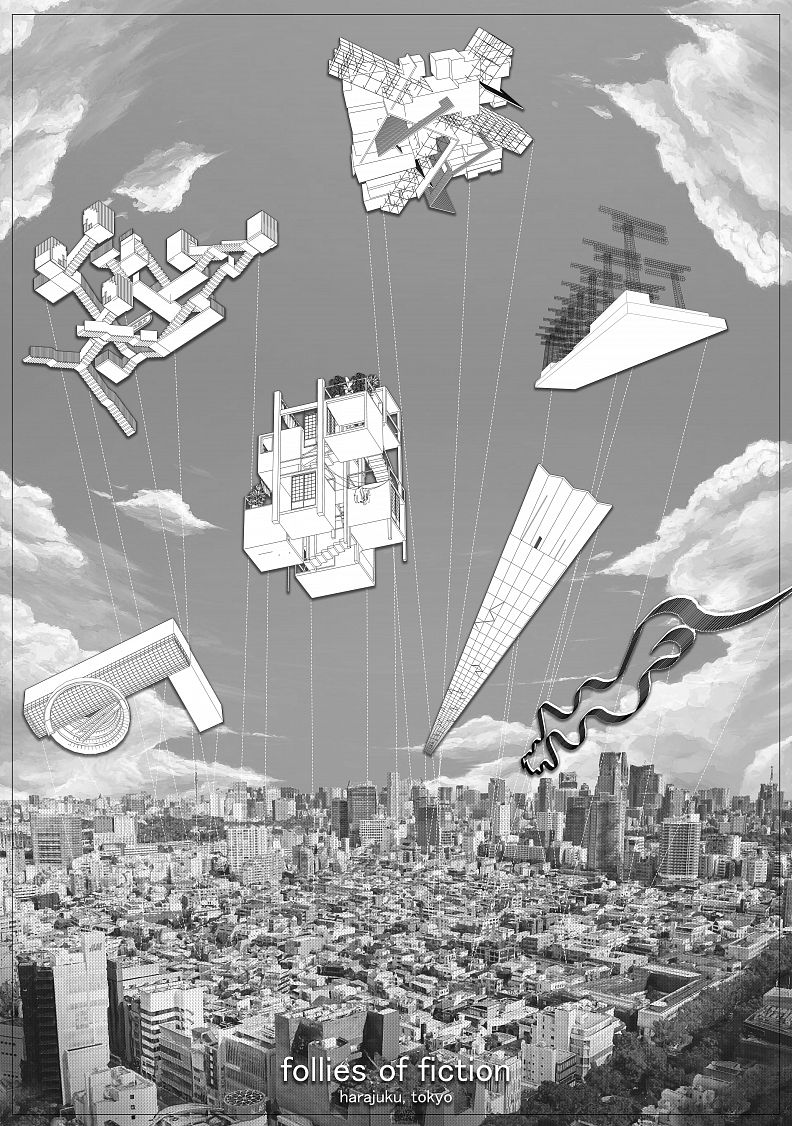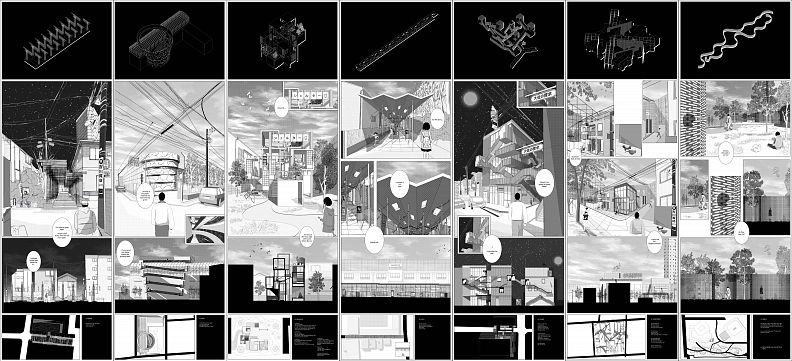PLACE IN FICTION: Follies of Fiction for the Hidden in Tokyo

Project idea
This project draws from a study of Haruki Murakami's 1985 novel 'Hard-Boiled Wonderland and the End of the World' and its fictionalised critique of modern Japan’s business (counter-)culture. It focuses on the phenomenon of socially-alienated individuals known as the Hikikomori. In response to this, the thesis proposes a series of architectural follies in the Shibuya district of (fictionalised) Tokyo. In the background are questions about expectations of utility and usefulness—asked of both the thinking subjects (the Hikikomori) and of architecture itself.
Project description
It responses to the critique posited by Murakami architecturally through a series of follies . These follies charges the issue of hikikomori through the creation of ‘useless’ programmes/ non-programme spaces to connect the hidden community while raising awareness of public through the experiences of these spaces.
By drawing and designing over Murakami, this thesis relooks at Tokyo, Japan and its cultural baggage that is crushing the individual.
Technical information
The design of the follies is distinct and varied, but never overly complex, guided by the conceptual framework of the thesis. Every folly is constructed with realistic buildability and material that best represent the architectural gesture of each folly.












